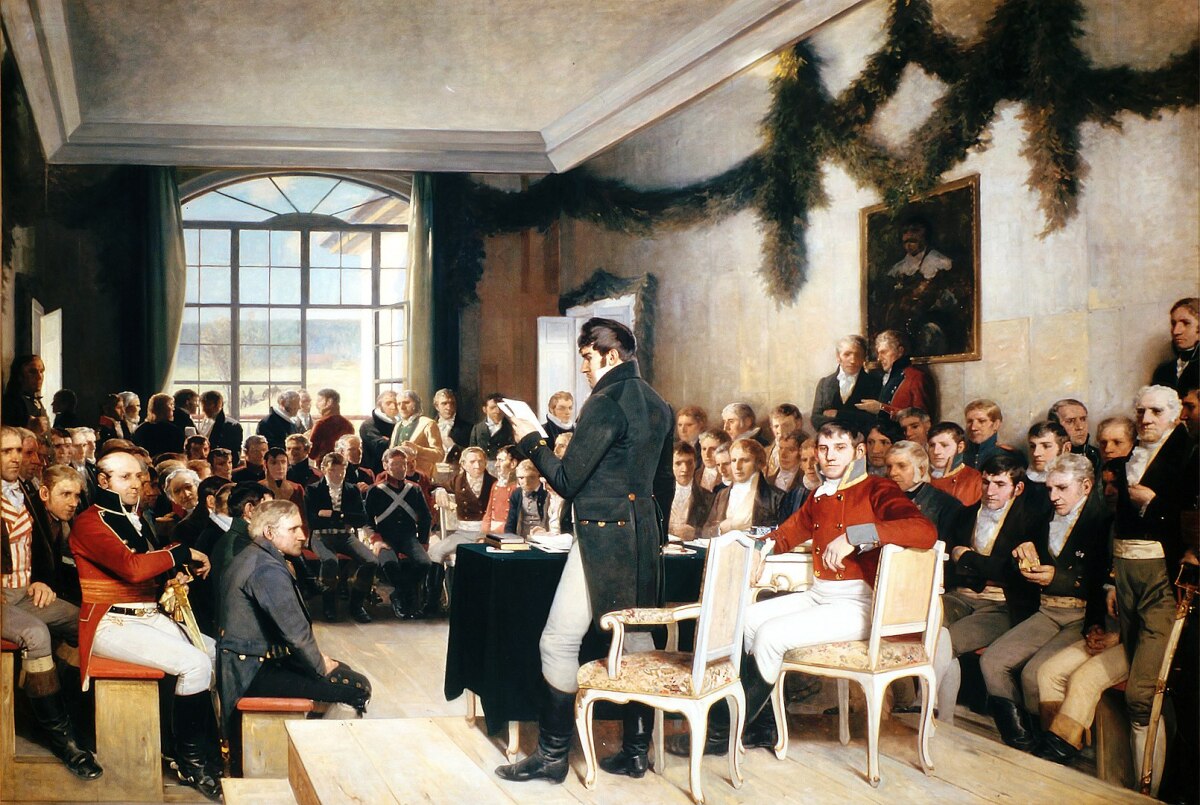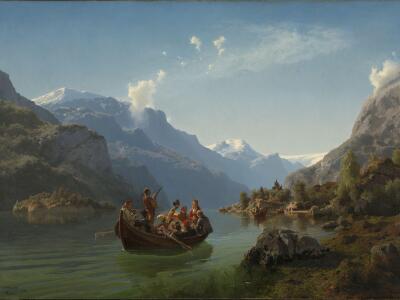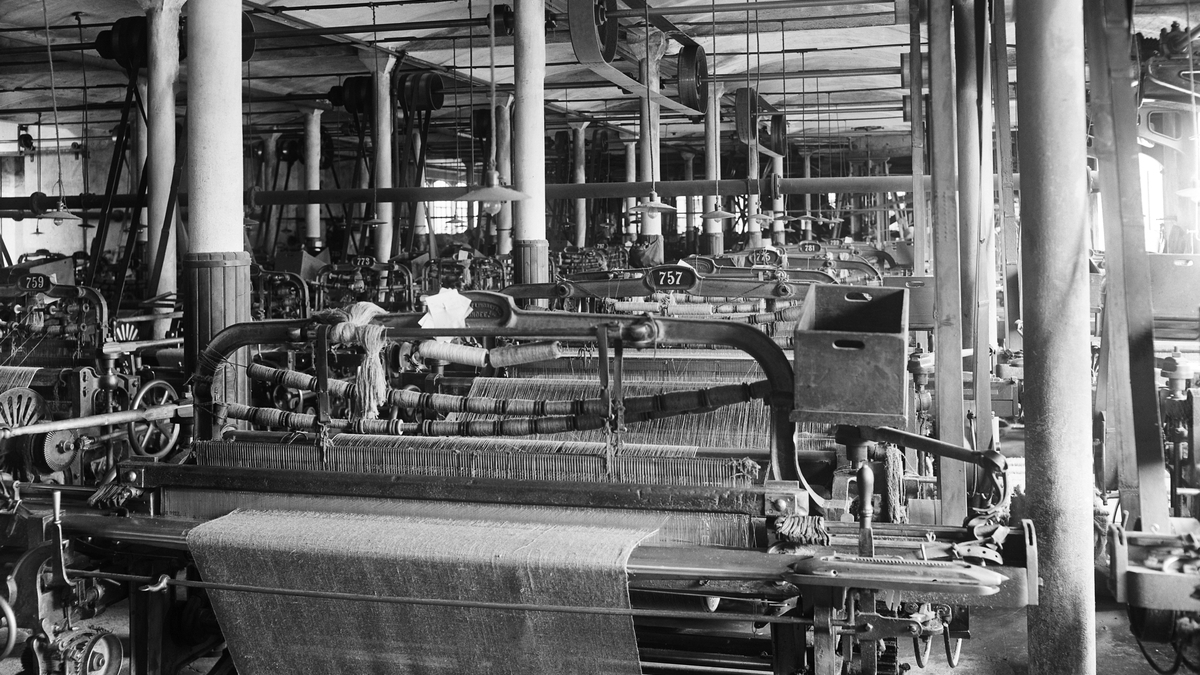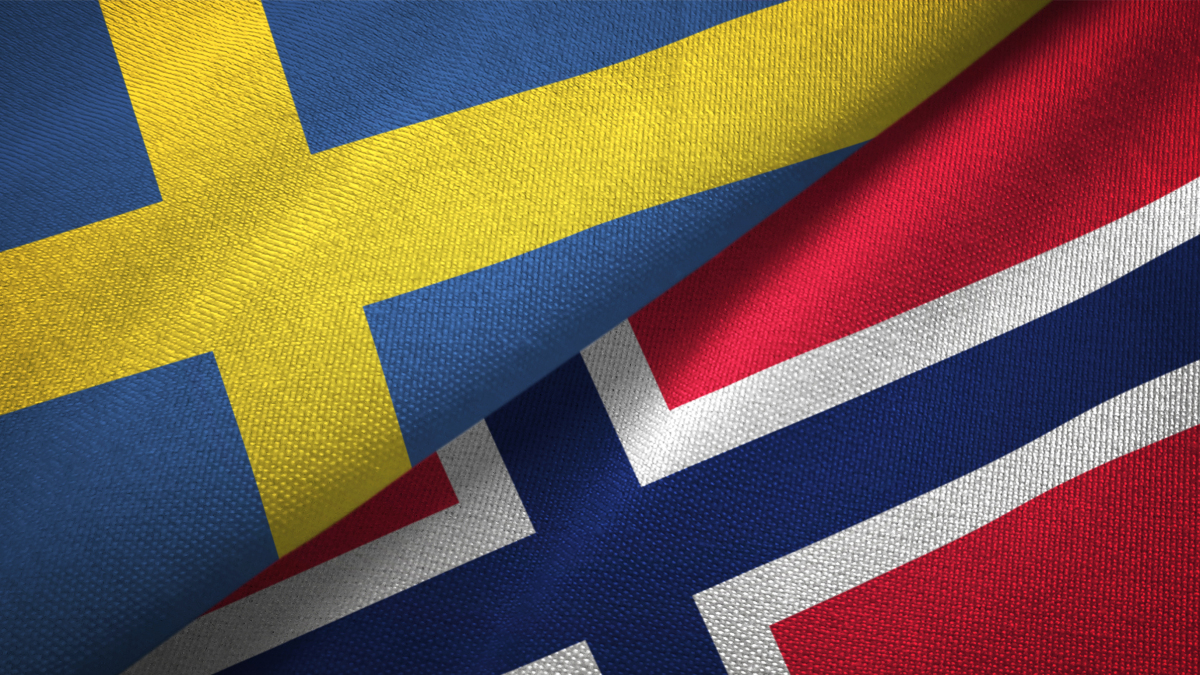Norway from 1814 to 1905

Norway from 1814 to 1905

Dissolution of the union and a new union
The early 19th century in Europe was a period marked by several wars, including a big war with England on one side and France on the other. This conflict is known as the Napoleonic Wars. Denmark-Norway was on France’s side, and when France lost the war, the Danish king had to give up Norway to Sweden, which had supported England during the war.
In 1814, the union between Denmark and Norway was thus dissolved. Many Norwegians hoped that Norway would become an independent country, and 112 powerful men met at Eidsvoll. Among other things, they wanted to draft a constitution for an independent Norway. On 17 May that year, Norway adopted a constitution of its own, which is why 1814 is an important year in Norway’s history.
Despite this, Norway was forced into a union with Sweden in November 1814. The new union with Sweden was a much looser one than the old union with Denmark. Norway was allowed to keep its own constitution, with some changes, and was self-governing in internal matters. The parliament, the Storting, was founded in 1814.
Foreign policy was decided by Sweden, and the king was Swedish. He was called Karl Johan, and the main street in Oslo was named after him.
National Romanticism and Norwegian national identity

An art and culture movement developed in Europe in the mid-19th century. It was called National Romanticism. It became important under this movement to highlight distinctive national characteristics, and often make them better than they were in reality. In Norway, particular emphasis was placed on the country's beautiful scenery, and rural farming communities were seen as typifying the true Norway. National Romanticism was expressed in literature, painting and music. Many people became increasingly proud of being Norwegian, and many people wanted Norway to become an independent country.
After several hundred years in union with Denmark, the written language used in Norway was Danish. The written form of Norwegian now known as Bokmål is a Norwegianised form of written Danish. During the era of National Romanticism, many Norwegians felt that we should have our own written language that was not based on Danish. That was the backdrop to the work of linguist Ivar Aasen, who travelled all over Norway to collect examples from different Norwegian dialects. Based on the examples he collected, he created a new form of written Norwegian: Nynorsk. Both Nynorsk and Bokmål have changed a great deal since the 19th century, but they are both two official forms of written Norwegian The Sami language is also an official language in Norway.
From agriculture to industry
Norway used to be a farming society. In the mid-19th century, around 70 per cent of the Norwegian population lived in the countryside. Most of them made their living from farming and fishing. It was a hard life for many people. The population grew, and there was not enough land and work for everyone. At the same time, changes were taking place in the towns and cities. Factories started up, and many people moved from the countryside to the towns and cities to find work. Life in the city was hard for many working-class families. People worked long hours, and living conditions were poor. Families often had many children, and it was not unusual for several families to share one small flat. Many children had to work in the factories to help their families survive.
Prior to 1850, approx. 15 per cent of the population lived in towns and cities. By the end of the 19th century, the figure had increased to 35 per cent. In 1900, 23 per cent of the gainfully employed worked in industry. Around 800,000 Norwegians emigrated to America between 1850 and 1920.

A free and independent country

Following political agreement with the king of Sweden, the Storting declared on 7 June 1905 that the Swedish king was no longer king of Norway and that the union with Sweden was thereby dissolved. This triggered a very strong response in Sweden and brought Norway and Sweden close to war. In two referendums held that year, it was decided that the union with Sweden was dissolved, and that the new Norwegian state would be a monarchy.
The Swedish king accepted the result of these referendums. The Danish Prince Carl was elected as the new king of Norway. He took the name Haakon, a name borne by previous kings of Norway. King Haakon VII was king of Norway from 1905 until his death in 1957.
Talk together

- Why do we celebrate 17 May in Norway?
- National days are celebrated differently in different countries. How is national day celebrated in countries you know of? What similarities and differences are there with the Norwegian way of celebrating the day?
- Many Norwegians developed a stronger sense of national pride in the 19th century. What is national pride and how is it created?
- What are the negative aspects of a strong sense of national pride, and what are the positive aspects.
- Do you think the period Norway was in union with Sweden has had any bearing on the relationship between the two countries today?
- You have now learned about the period of Norwegian history from 1814 to 1905. Do you think that anything you have learned has been particularly important for the development of modern-day Norway?

Select the right answer
When did Norway adopt a constitution of its own?
Select the right answer
When was Norway in union with Sweden?
Select the right answer
How did Ivar Aasen create nynorsk?
Select right or wrong
Read the statements. What is right? What is wrong?
Select right or wrong
Read the statements. What is right? What is wrong?
Click on the image
Click on the right image in the timeline. When was Haakon VII king of Norway?
